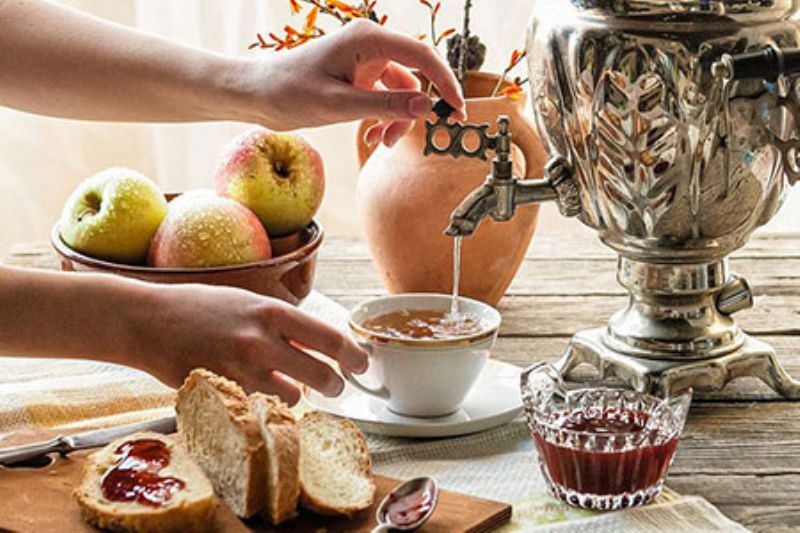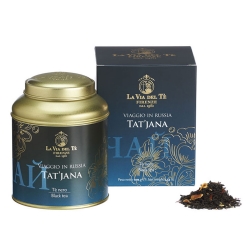
The Russian tea tradition
Tea culture in Russia is inseparable from samovar.
Invented at the beginning of the 18th century, this essential tea-making tool was widely adopted as tea became a daily-use drink among all social classes.
The samovar - still in use in Russia especially in the provinces - is a large tea kettle, which contains several litres of water kept at the right temperature. Memorable descriptions of tea time, with a whole family gathering around the samovar, can be found in the masterpieces of Russian literature of the 19th and 20th centuries.
Originally a piece of charcoal was lit in the central part of the samovar, to produce hot water: the samovars are now electric, with a thermostat regulating the water temperature according to the different types of tea. The teapot, in which a concentrate of tea (Zavarka) has been prepared, with a fair amount of tea leaves and a small amount of water, is placed over the samovar and kept warm.
To serve the tea, everyone is given a small quantity of the Zavarka to be diluted with the desired amount of water from the spigot depending on personal tastes. Tea goes with sugar or the characteristic Varenye, a fruit compote in syrup that is prepared with cherries, raspberries berries or strawberries, while in the countryside still survives the habit of drinking tea through a lump of sugar held between the teeth. In addition to snacks and cheeses, traditional desserts offered with tea are Bubliki, Baranki and Sushki, a variety of doughnuts with a different consistency, sometimes to be drenched in liquid.










